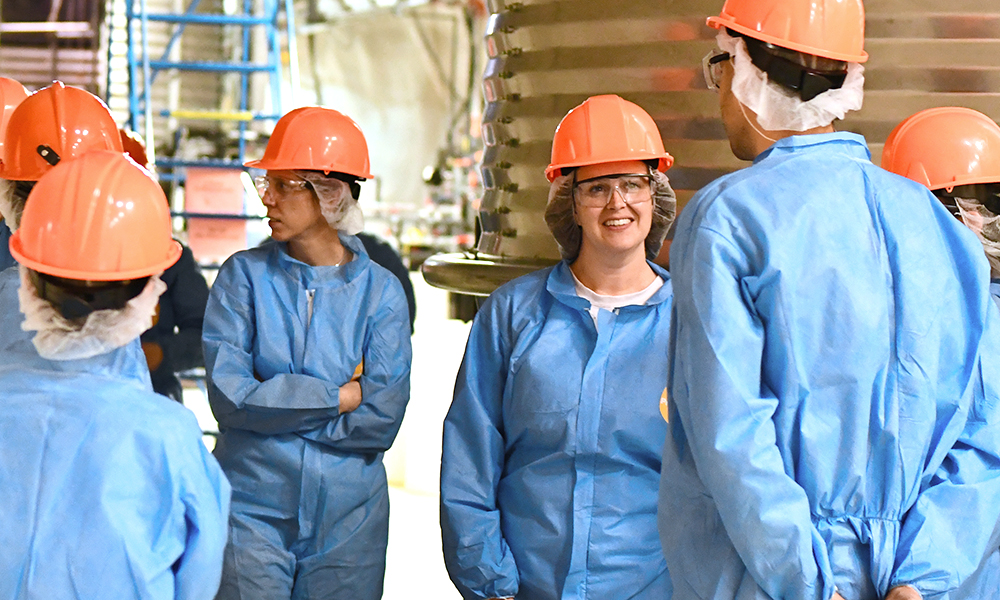Pioneering scientists from around the world, including the NWMO, met recently in Ontario to explore the brave new world of underground microbes. They first attended a two-day workshop on subsurface science and exploration hosted by the Canadian Institute for Advanced Research (CIFAR), and then visited SNOLAB, a science laboratory located two kilometres below the surface in the Vale Creighton Mine near Sudbury.
The NWMO is involved in this research because of the need to understand the chemical, physical and biological interactions that could occur in a deep geological repository.
“We want to push the state of science in this area,” said Dr. Jennifer McKelvie, a geoscientist at the NWMO, who attended both the workshop and the tour of SNOLAB. “This was a great opportunity for some of the smartest people in the world to talk about microbes in the subsurface, and go underground.”
One of the participants in the workshop was Barbara Sherwood Lollar, a University of Toronto professor in earth sciences, who receives funding from the NWMO. She has been instrumental in discovering the age of minute amounts of water found in the Canadian shield, and revealing new information about the micro-organisms it sustains.
This research on low organic, low water, low biomass environments is not only relevant in designing a deep geological repository for used nuclear fuel, it may also be applicable on Mars, says Dr. McKelvie.

